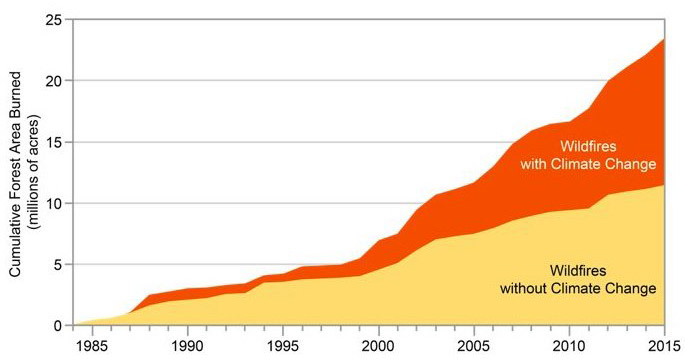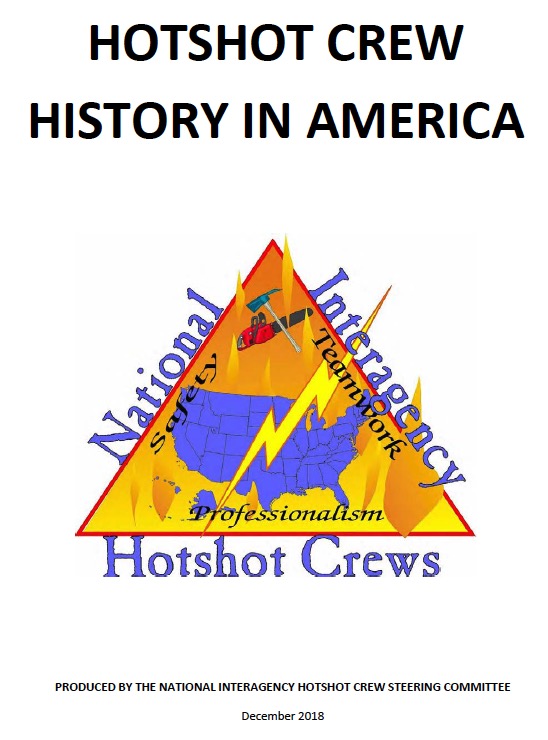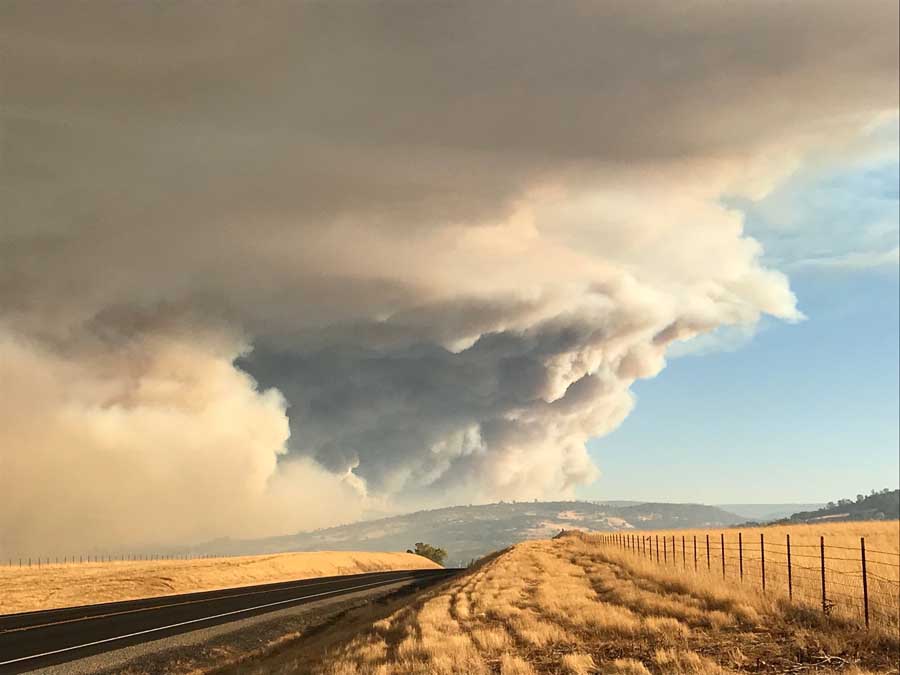
With the devastating wildfires in California this summer and the visits by President Trump to the Camp and Woolsey Fires, firefighting and forest management were brought into the national conversation. Mr. Trump showed an interest in the fire siege, criticizing forest management, suggesting rakes as one of the solutions, and threatening on multiple occasions to cut unspecified funding allocated to California.
The magnified interest seen in Washington may have been the impetus for the *Executive Order (EO) signed by Mr. Trump on December 21. The document requires emphasis in a number of areas related to wildland fire, some of which have specific goals. The stated rationale for the EO is identified:
For decades, dense trees and undergrowth have amassed in these lands, fueling catastrophic wildfires. These conditions, along with insect infestation, invasive species, disease, and drought, have weakened our forests, rangelands, and other Federal lands, and have placed communities and homes at risk of damage from catastrophic wildfires.
With the same vigor and commitment that characterizes our efforts to fight wildfires, we must actively manage our forests, rangelands, and other Federal lands to improve conditions and reduce wildfire risk.
Both Mr. Trump and his Secretary of the Interior, Ryan Zinke, who also showed up before cameras at fire scenes this summer, denied that climate change is one of the factors affecting the increase in wildfire activity in recent decades.
“I’ve heard the climate change argument back and forth. This has nothing to do with climate change.”
Interior Secretary Ryan Zinke, in an interview after visiting the Carr Fire at Redding, California.

The EO lists a number of areas with specific goals or directives.
FUEL REDUCTION. The four Department of the Interior land management agencies now have an objective in 2019 of treating a total of 750,000 acres to reduce fuel loads. The objective for the Forest Service is 3,500,000 acres. As of December 8, 2018, according to the National Situation Report, the year-to-date accomplishments for acres treated with prescribed fire were 525,659 and 1,307,389, respectively. Presumably, mechanically or herbicide-treated acres were not included in those 2018 figures. The goals appear to be substantially higher than what has been done this year. However, as direction from on high moves the goal posts, federal agencies can sometimes initiate creative methods to keep everyone happy. For example, recently the Forest Service has started “counting” wildland fire acres where light to moderate wildfires have caused vegetation to improve what used to be called “fire condition class”. These then become “treated acres”. In addition, some timber sales are now being counted. So, magic, presto, poof! The number of acres “treated” adds up more quickly than they used to. A person with extensive D.C. experience told us that they expect the land management agencies are not worried about meeting the fuel treatment goals laid out in the EO.

LOGGING. Calling it “health treatments”, the FS has a goal of selling 3.8 billion board feet of timber in 2019, while the DOI’s goal is 600 million. This total of 4.4 billion board feet is a significant 37 percent increase over the 3.2 billion board feet removed from those agencies’ lands in 2017, according to the Sacramento Bee. The EO also requires the Secretaries of Agriculture and Interior to identify salvage and log recovery options from lands “damaged” by fire, insects, and disease in 2017 and 2018. Many people say that logging is not the answer to the wildfire problem, and that areas visited by fire are not necessarily “damaged”. While some rehabilitation is often required, burned areas don’t always have to be fixed or logged.
NATIVE AND INVASIVE SPECIES. Both the FS and the DOI have goals of treating 750,000 acres.
UNMANNED AERIAL SYSTEMS. The Secretaries are ordered to maximize the use of unmanned aerial systems (UAS), or drones, in forest management and in support of firefighting. The DOI has been extremely aggressive in the last two years in establishing a surprisingly robust UAS program. There is a report that a person formerly with the DOI’s Alaska Fire Service is now heading the Forest Service UAS program.
The goals in the EO are an unfunded mandate. It says, “[The agencies] shall review the Secretary’s 2019 budget justifications and give all due consideration to establishing the following objectives for 2019, as feasible and appropriate in light of those budget justifications, and consistent with applicable law and available appropriations.”
*Here is a backup copy of the Executive Order in case the one at WhiteHouse.gov disappears.
Thanks and a tip of the hat go out to Eric. Typos or errors, report them HERE.
A correction was made December 26 about the new leadership of the Forest Service UAS program.






